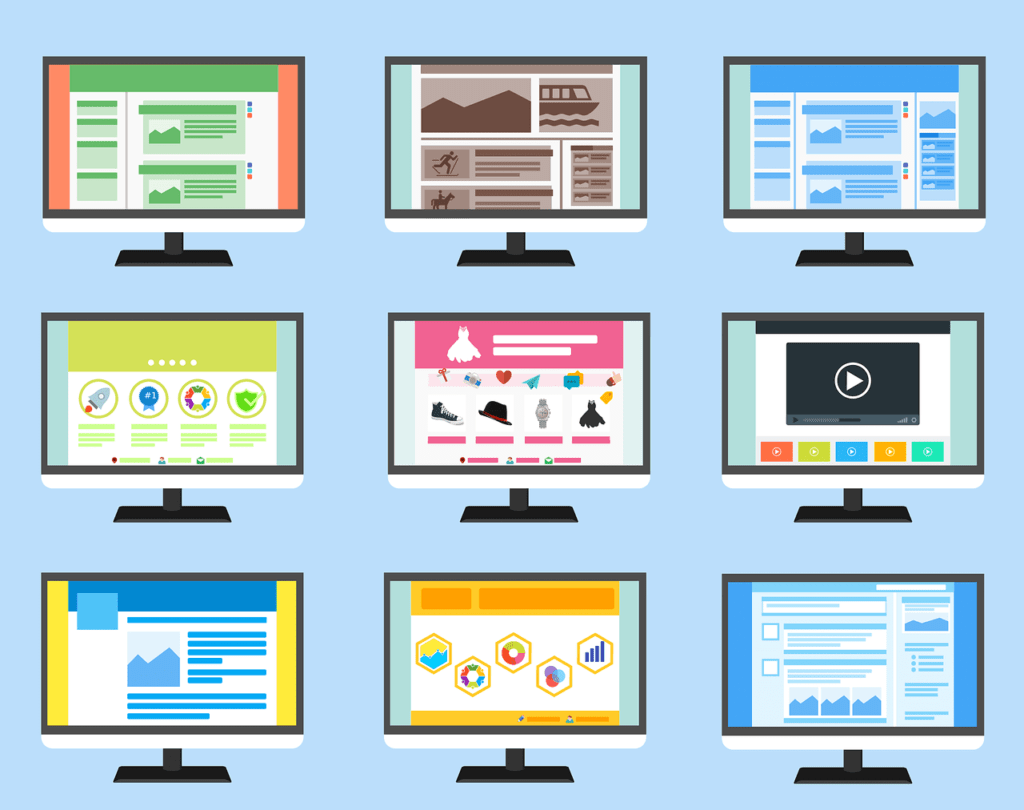Introduction
In today’s digital era, a website is more than just a digital footprint; it’s a vital tool for communication, branding, and business. However, as technology and trends evolve, so too must your website. Enter the Essential Website Redesign Guide—a comprehensive roadmap to transforming your website into a modern, efficient, and user-friendly platform.
Get rock-solid web hosting with Hostinger! Enjoy 70% off, blazing speeds, and the reliability you need. Use our referral link to get your deal!
Understanding the Need for Change
Why Redesign: Evaluating Your Current Website’s Performance
Embarking on a website redesign is no small feat. It’s a decision often marred by the proverbial “if it ain’t broke, don’t fix it” mentality. However, the digital landscape is constantly shifting. Your website might not be ‘broken’, but is it performing optimally? Analyzing your site’s current performance in areas like user engagement, load times, and conversion rates can highlight the necessity of a redesign. A fresh, up-to-date website can improve user experience, reflect current trends, and maintain your competitive edge.
The Impact of User Experience (UX) on Redesign Decisions
The heart of any website redesign should be the user experience. A site that’s easy to navigate and enjoyable to use keeps visitors coming back. Consider this: a visitor lands on your website and finds it confusing or unappealing. Chances are, they won’t stick around. In contrast, a well-designed, user-centric website can significantly boost engagement and satisfaction. Remember, every element of your site, from the layout to the color scheme, affects the overall user experience.
Balancing Aesthetics and Functionality: A Holistic Approach
In the grand scheme of website design, aesthetics and functionality are two sides of the same coin. A visually stunning website that’s a nightmare to navigate is just as problematic as a user-friendly site that looks like it’s stuck in the 90s. Striking the right balance is key. Your redesign should not only reflect your brand’s personality and values but also be intuitive and accessible to your users.
Planning Your Website Redesign

Setting Clear Objectives: What Do You Want to Achieve?
Before diving into the redesign process, it’s essential to set clear, measurable objectives. What do you want to achieve with this redesign? Are you looking to increase traffic, boost sales, or improve customer engagement? Setting specific goals will guide your redesign strategy and help you measure its success post-launch.
Audience Analysis: Tailoring the Redesign to User Needs
Understanding your audience is crucial in a website redesign. Different demographics have varied preferences and behaviors. Conducting audience analysis helps in creating a site that resonates with your target users. This could involve surveys, studying analytics, or researching market trends. The goal is to create a site that not only looks good but also addresses the specific needs and preferences of your audience.
Competitor Analysis: Learning from Others in Your Niche
Take a look at your competitors. What are they doing right with their websites? What can you do better? A competitor analysis can provide valuable insights into the latest trends and best practices in your industry. This doesn’t mean copying what others are doing, but rather learning from their successes and failures to inform your own redesign strategy.
Design and User Experience
Modern Design Trends: What’s In and What’s Out
Design trends are constantly evolving. What was cutting-edge a few years ago might now be passé. Staying abreast of current design trends is crucial. This includes everything from typography and color schemes to interactive elements and scrolling behaviors. However, it’s important not to sacrifice usability for trendiness. The best designs blend contemporary aesthetics with timeless usability.
Navigation and Layout: Crafting an Intuitive User Journey
Navigation is a cornerstone of user experience. Your site’s navigation should be intuitive and straightforward. Users should be able to find what they’re looking for without confusion or frustration. This involves thoughtful layout planning, clear labeling, and considering the user’s journey from the homepage to other sections of the site.
Mobile Responsiveness: Adapting to the Era of Smartphones
In an age where a significant portion of web traffic comes from mobile devices, having a mobile-responsive website is non-negotiable. This means your site should look and function seamlessly across a range of devices, from desktops to smartphones. Mobile responsiveness not only improves user experience but also contributes to better search engine rankings.
Content Strategy and SEO

Content Audit: Identifying Gaps and Opportunities
A successful website redesign isn’t just about aesthetics; it’s equally about content. Performing a content audit involves reviewing all the content on your site to identify what’s working and what’s not. This process helps in pinpointing outdated information, redundant pages, and opportunities for new, engaging content. Remember, quality content is key to keeping your audience engaged and improving SEO.
SEO Essentials in Redesign: Maintaining and Improving Your Rankings
SEO (Search Engine Optimization) should be a cornerstone of your redesign strategy. It’s not just about getting to the top of search engine results; it’s about staying there. Ensure that your redesigned website adheres to SEO best practices, including optimized meta tags, mobile responsiveness, fast loading times, and high-quality, keyword-rich content. A redesign is a perfect opportunity to improve your site’s visibility and reach.
Engaging Content: Keeping Visitors Hooked
In the digital age, attention spans are short. Your content needs to be not only informative but also engaging and compelling. Use a mix of formats like videos, infographics, and blogs to keep your audience interested. Remember, engaging content is more likely to be shared, increasing your site’s reach and impact.
Technical Considerations

Choosing the Right CMS and Technologies
The technology behind your website plays a crucial role in its performance and scalability. Choosing the right Content Management System (CMS) and technology stack is crucial. Consider factors like ease of use, customization options, and scalability. Whether it’s WordPress, Joomla, or a custom solution, the right technology can make or break your website’s success.
Site Speed and Performance: Non-Negotiable Aspects
Website speed and performance are critical. Users expect websites to load quickly and efficiently. Slow-loading pages can lead to high bounce rates and lost opportunities. Optimize images, leverage browser caching, and minimize HTTP requests to enhance your site’s speed. Remember, faster websites not only provide a better user experience but also rank higher in search engine results.
Ensuring Website Security During and After Redesign
In an era of increasing cyber threats, website security is paramount. During the redesign process, ensure that all aspects of your site are secure. This includes using secure hosting, implementing SSL certificates, and regular security audits. A secure website protects not just your data but also your users’ trust.
Testing and Launch
The Importance of Rigorous Testing Before Going Live
Before launching your redesigned website, thorough testing is essential. This includes testing for functionality, usability, and compatibility across different browsers and devices. Rigorous testing helps identify and rectify any issues, ensuring a smooth user experience upon launch.
Gathering Feedback: Why User Testing Matters
User feedback is invaluable. Consider conducting user testing sessions to gather insights into the user experience of your new design. This can provide real-world perspectives and highlight areas for improvement that you might not have considered.
Launch Strategies: Making a Splash in the Digital World
A website launch is a marketing opportunity. Plan a launch strategy that makes a splash. This might include social media announcements, email marketing campaigns, and press releases. A well-planned launch can generate buzz and drive traffic to your new site.
Post-Launch Analysis and Maintenance
Monitoring Performance: Analytics to Watch Post-Launch
After your website goes live, closely monitor its performance. Use tools like Google Analytics to track metrics such as user behavior, traffic sources, and conversion rates. This data is crucial for understanding the impact of your redesign and identifying areas for further improvement.
Continuous Improvement: The Journey Doesn’t End at Launch
A website is never truly ‘finished’. Continuous improvement is key. Based on the analytics and user feedback, make iterative changes to enhance performance and user experience. The digital world is always evolving, and your website should too.
User Feedback: Listening and Adapting
Post-launch, actively seek and listen to user feedback. This can come from social media, customer support inquiries, or direct user feedback. Being responsive to your audience’s needs and making adjustments based on their feedback can greatly enhance the effectiveness of your website.
Redesigning for E-commerce
Unique Considerations for E-commerce Websites
E-commerce websites have their own set of unique challenges and requirements. A redesign in this context is not just about aesthetics but also about functionality, ease of navigation, and the overall shopping experience. Key considerations include simplifying the checkout process, ensuring high-quality product images and descriptions, and optimizing for mobile shopping. An effective e-commerce website redesign can significantly enhance user experience and conversion rates.
Integrating Payment Systems and Customer Experience
The integration of reliable and secure payment systems is crucial in e-commerce. Customers expect a smooth and secure transaction process. Hence, it’s essential to choose payment gateways that are not only user-friendly but also provide robust security measures. Moreover, aspects like order tracking, customer service, and easy return policies play a significant role in enhancing customer experience.
Building Trust and Credibility Through Design
Trust and credibility are the backbones of e-commerce. Your website design should communicate reliability. This can be achieved through professional layouts, the inclusion of trust signals like SSL certificates, customer testimonials, and clear contact information. A trustworthy website design can significantly influence purchasing decisions.
Integrating Social Media and Marketing

Leveraging Social Media in Your Redesign
Social media integration is a powerful tool in today’s digital landscape. Incorporating social media elements into your redesign can enhance user engagement and increase your site’s reach. Features like social sharing buttons, linking to your social media profiles, and incorporating social reviews or feeds can create a more interconnected and dynamic user experience.
Email Marketing and Redesign: A Symbiotic Relationship
Email marketing remains a vital tool for customer engagement and retention. A website redesign is an opportunity to revamp your email marketing strategy. This includes optimizing your site for email subscriptions, creating visually appealing email templates that match your new website design, and segmenting your email list for more targeted campaigns.
Digital Marketing Strategies Post-Redesign
After a redesign, updating your digital marketing strategy is crucial to drive traffic to your new site. This might involve SEO optimization, content marketing, pay-per-click advertising, and more. A comprehensive digital marketing strategy ensures that your redesigned website gets the attention it deserves.
Budgeting and Resource Allocation
Realistic Budgeting for a Successful Redesign
Website redesign can be a significant investment. Setting a realistic budget is crucial. This budget should account for all aspects of the redesign process, including design, development, content creation, testing, and marketing. A well-planned budget ensures that resources are allocated efficiently and can help avoid unnecessary expenses.
Allocating Resources: Time, Team, and Technology
Resource allocation is not just about budget; it’s also about time and human resources. A successful redesign requires a skilled team and adequate time for planning, execution, and testing. Ensure that you have the right team in place and schedule realistic timelines for each phase of the redesign.
Cost-Effective Solutions for Small Businesses
For small businesses, budget constraints can be a significant challenge. However, there are cost-effective solutions available. This includes using open-source CMS platforms, choosing affordable hosting solutions, and prioritizing key elements of the redesign to maximize impact while staying within budget.
Outsourcing vs. In-House Development

Pros and Cons of Outsourcing Your Redesign
Outsourcing your website redesign can offer access to specialized skills and potentially lower costs. However, it can also mean less direct control over the process and potential communication barriers. Weighing the pros and cons of outsourcing versus in-house development is crucial in making the right decision for your project.
Building an In-House Team: What You Need to Know
Building an in-house team for your website redesign offers greater control and coordination. It allows for more direct communication and alignment with your brand’s vision. However, it requires investment in hiring the right talent and possibly longer timelines.
Collaborating with Agencies: Tips for a Smooth Partnership
If you choose to collaborate with an agency, clear communication and setting expectations are key. Ensure that you have a detailed contract, a clear understanding of the scope of work, and regular check-ins to monitor progress. A good partnership can bring your vision to life effectively.
Conclusion
A website redesign is a pivotal step in reinforcing your online presence. It’s an opportunity to align your site with current trends, enhance user experience, and achieve your digital goals. By considering these key aspects and strategically planning your redesign, you can ensure your website not only looks fresh and modern but also performs optimally in today’s digital landscape.
FAQs
Q: How often should I redesign my website? A: The frequency of website redesigns depends on various factors such as industry trends, technological advancements, and changes in user expectations. However, it is recommended to evaluate and update your website every 2-3 years to stay current and competitive.
Q: Can I retain my existing website content during a redesign? A: While it is possible to retain some of your existing website content during a redesign, it is crucial to assess its quality, relevance, and alignment with your goals. Consider updating and optimizing the content to ensure it aligns with the new design and meets your audience\’s needs.
Q: How can a website redesign improve my search engine rankings? A: A website redesign presents an opportunity to implement SEO best practices, such as optimizing content, improving site structure, and enhancing user experience. By addressing these factors, you can improve your website\’s visibility in search engine results and potentially achieve higher rankings.
Q: Should I inform my audience about the upcoming website redesign? A: It is generally beneficial to inform your audience about an upcoming website redesign. Communicate the changes and improvements you are making, the benefits they will experience, and any temporary disruptions they may encounter during the transition. This proactive communication can help manage expectations and maintain a positive user experience.
Q: How can I measure the success of my website redesign? A: The success of a website redesign can be measured through various metrics such as increased website traffic, improved user engagement, higher conversion rates, and positive feedback from users. Set specific goals and regularly track and analyze relevant data to evaluate the impact of your redesign efforts.
In conclusion, a website redesign requires careful planning and execution to achieve a successful outcome. By following this checklist, you can ensure that your website redesign project addresses crucial aspects like user experience, SEO optimization, and content strategy. Remember to keep your target audience in mind and regularly analyze your website\’s performance to make data-driven improvements. Embark on your website redesign journey with confidence, and watch your revamped website thrive in today\’s digital landscape.








